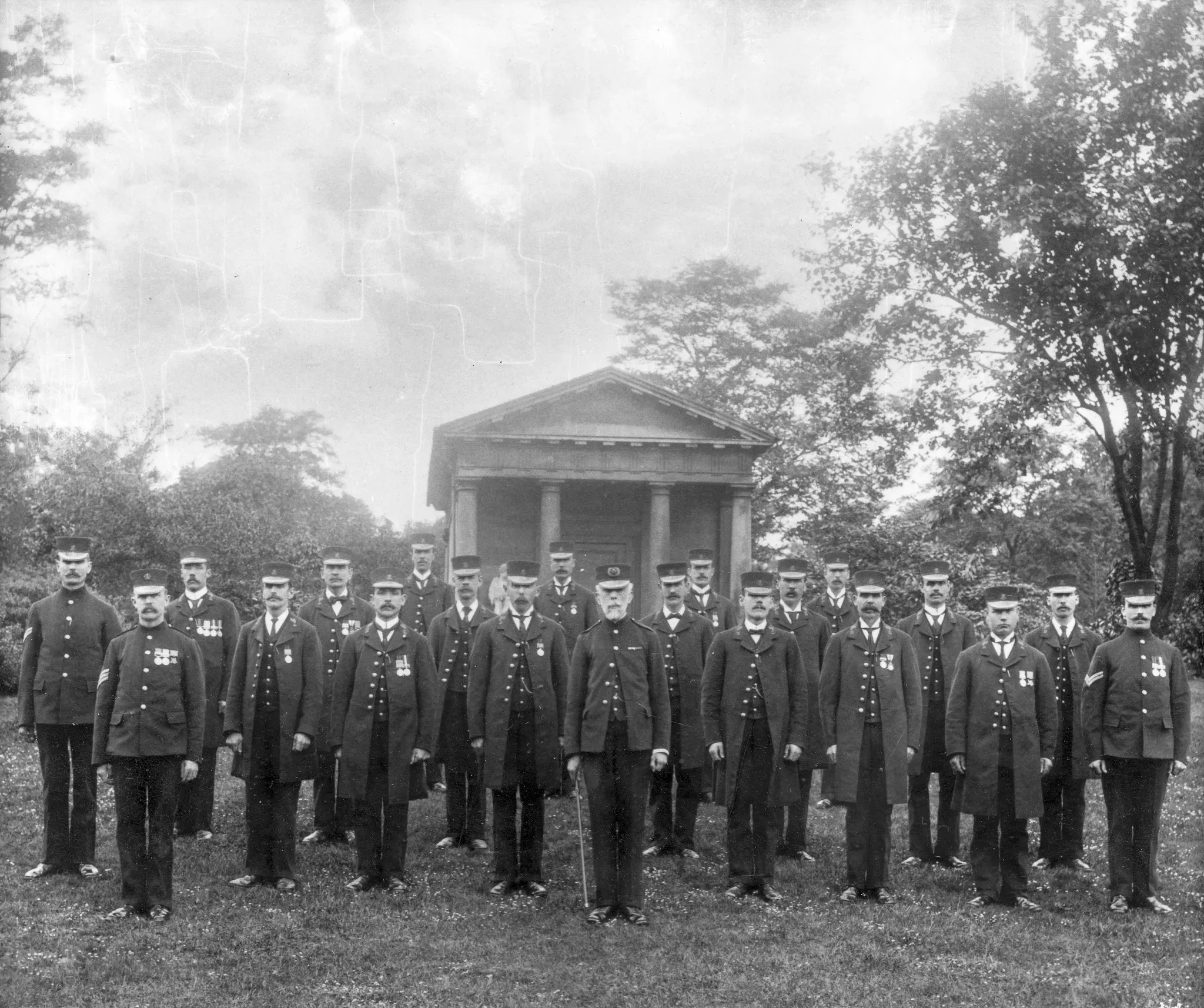17 August 2018
A walking tour of the library collections
Kew has many collections of materials that comprise the Library facet of the Library, Art and Archives. At the end of his year-long tenure, our library graduate trainee has gone for a tour of these collections.

Accessing the treasures
I must begin by confessing that the locations where these materials are housed are not accessible to the public, however the materials themselves most certainly are. Kew's books and journals can all be located in the library catalogue, which can be accessed via terminals in the reading room, or via the internet from any location around the world. Please just remember to let us know in advance if you want to visit and use these resources as retrieval can take a little while (for reasons that will soon become apparent)!
Exotic objects of desire
Starting in the herbarium complex, on the ground-floor below the reading room, I head past the economic botany collection to the Orchid library. This little library is conveniently situated next to the orchid herbarium and provides an invaluable resource for researchers working on these exotic plants. Information that contributed to our Thai Orchid Festival blog post came from books shelved in this location. As well as books there is a large collection of journals from all around the world and in many languages, all dedicated to the study and cultivation of orchids.
Applied prescience, 21st century style
Next to the Orchid Library is a mysterious room shrouded in stygian darkness where it's possible to study the eldritch art of divination - palm reading (sorry). The Palm Room houses a laboratory and a small collection of books which support the work of the botanists specialising in this area. It's important not to confuse the Palm Room with the Palm House, as the latter is very much larger, more humid, and has stunning mature palms growing in it whilst the former is quite small and has microscopes, books, and lockers of specimens. However, the two, when combined with some very clever people with inquisitive minds and can-do attitudes, creates an extremely special force for good and is a model oft repeated at Kew. Indeed many of the books and journal articles you find in the library at Kew are authored or co-authored by Kew staff, past and present, showing Kew’s commitment to creating and disseminating knowledge of plants and fungi for the benefit of future generations.
In the corners of 'cots
Leaving the mysteries of the future behind me(!) I head right, up the stairs, past the old main library, and carry on climbing up to the second floor. Here we have a very large room known colloquially as 'monocots'. There is a strange convection effect in this room which makes it feel like a wind tunnel set to 'gentle warm breeze'. Amidst the low soughing of the wind there's a very large number of specimen lockers, books, pamphlet boxes and journals. The materials here cover such diverse plants as grasses and bamboos, bromeliads, ferns and perennially popular garden species such as daffodils and irises. There are secrets to discover here too: tucked away in one corner are fern journals such as the Fiddlehead Forum and a special prize should be awarded to anyone who finds the Journal of the Bromeliad Society at the first attempt, such is it's elusiveness (I'm pretty sure that at least one graduate trainee must have given up the pursuit, concluding the journal location to be an urban myth).
There and back again
From monocots, I head back down the stairs to the Library Services Room, grab my handkerchief and walking stick and set out on the next leg of my journey. I dash out the main gate and across Kew Green to the administration building, past the constabulary offices and publishing, amongst other vital Kew services. Handlebar moustaches are no longer a uniform requirement for the Kew constabulary, but the men and women of the constabulary still do a great job of keeping our staff and visitors safe, all the same.

Hard science
After leaving the admin building behind I pause for a moment for second breakfast, then continue to the Jodrell Laboratory, where I enter by the postern gate (my name for it). I head downwards into the perpetual gloom (the light switch is at the bottom), into a brightly lit chamber which is always refreshingly cool, however warm the day outside. This is the Jodrell library, home to Kew's mycology and lichen books and journals, and materials that support the molecular, forensic, and other cutting-edge research undertaken here. Nestled alongside the library stacks is the fungarium, which houses some 1.25 million dried fungi specimens.
The last stop in my quest: The School of Horticulture
Re-emerging blinking into the sunlight I spy the School of Horticulture before me. The School of Horticulture building has a wonderful atmosphere of antiquity - it is nearly 160 years old. The School is the home base for students undertaking the prestigious Kew Diploma in Horticulture and it has been well used by many generations of students, including such notable alumni as Alan Titchmarsh and Alys Fowler. Outside the library is the journal display, featuring many professional and scientific journals that provide cutting edge information for students and staff. In the library itself there are beautiful glass-fronted, floor to ceiling doors on the bookcases, and the old fittings sit cosily next to networked PCs, a comfortable juxtaposition of old and new educational technologies.
And... a cliff-hanger
Sadly, I’ve run out of time and space to explore all the collections that I wanted to: bryophytes, elephant folios and mycology illustrations will have to wait for now. But there will be opportunities for another graduate trainee to take up and continue the quest and finish the story.
- Andy Farquhar -
(Library Graduate Trainee)


